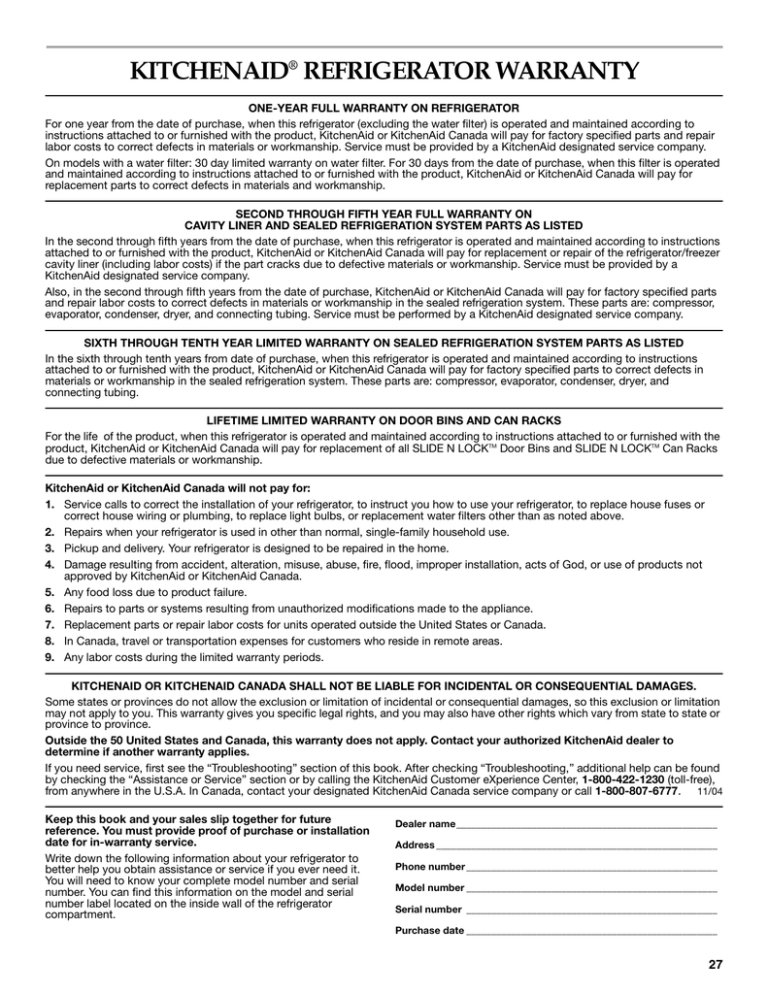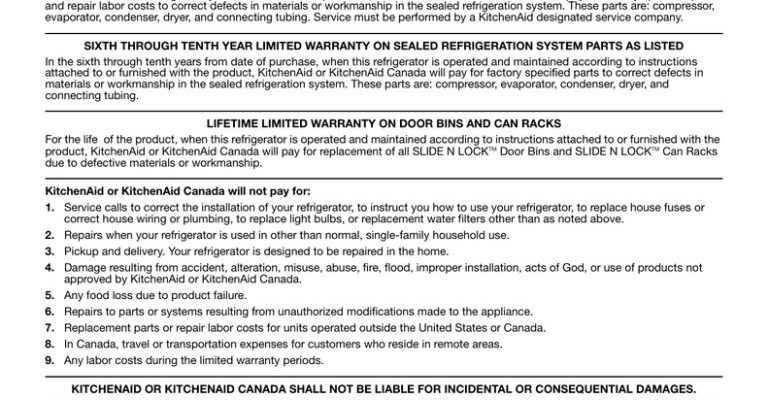
Honestly, if you’re anything like me, you probably have a mild suspicion of anything requesting personal info online. Every website seems to want your email these days, and with scams on the rise, it’s totally understandable to hesitate. KitchenAid, being a household name, should be trustworthy—but those nagging doubts can make even the most straightforward warranty registration feel a bit risky.
Let me explain how online warranty registrations for KitchenAid kitchen appliances actually work, what you should consider about their safety, and how to protect yourself while keeping your new blender or mixer covered. The world of warranties is surprisingly full of details (and a few gray areas), so I’ll walk you through each piece as clearly as possible.
How Does Online Warranty Registration Work For KitchenAid Appliances?
To start, online warranty registration is basically KitchenAid’s way of linking you—the owner—to your specific appliance. Imagine it as syncing your new gadget to their system instead of fiddling with manual paperwork. When you buy a KitchenAid product, you often get instructions to register online through their official website or by scanning a QR code from the packaging.
During the process, you’ll usually be asked for:
- Your name and contact information
- Purchase date and location
- Model and serial number of the appliance
- Sometimes proof of purchase (like a receipt upload)
The actual act of registration is pretty simple—enter your details, create an account (or not), and hit submit. The point is to “pair” your appliance with your identity, so if anything goes wrong or needs troubleshooting, KitchenAid can find your record fast. It’s a bit like resetting a password: the right info makes solving problems smoother later.
Here’s the thing, though—not registering your product doesn’t void your warranty completely. Most of the time, your original purchase receipt is enough for warranty service. Registration just makes things easier if you lose that slip or need to contact customer support in a hurry.
Why Do Manufacturers Want You To Register Online?
You might be wondering, “What’s in it for KitchenAid?” The main reason is actually convenience—for both you and them. When your appliance is registered, their customer service team can quickly *troubleshoot* or process warranty claims. Think of it like syncing your phone’s contacts to the cloud; if you lose your device, you can restore it all later.
But there’s another layer: marketing. When you sign up, you might get extra tips, recipes, or offers from KitchenAid. They aren’t just gathering your info for code resets—they’re building a customer relationship. If you’d rather skip promotional emails, you can usually uncheck a box or unsubscribe later.
Of course, some users feel uneasy about data collection, especially when it comes to universal kitchen gadgets like mixers, blenders, or coffee makers. But the risk is generally low if you stick with the official KitchenAid website. Remember, pairing your appliance for support is the main goal—promotions are a side effect.
Are Online Warranty Registrations Actually Safe?
This is where the rubber meets the road. *Is putting your personal info into KitchenAid’s registration portal safe?* In most cases—yes, it’s about as safe as ordering something from a reputable online store. Big brands like KitchenAid invest heavily in secure websites. Look for *https://* at the start of the web address and double-check you’re at their real site, not a sketchy copycat.
But no system is 100% bulletproof. Here are a few key tips for staying safe when registering:
- Only use links provided in the box or on KitchenAid’s official website
- Avoid entering info on pop-up ads or via unsolicited emails
- Don’t give out more information than required (leave optional fields blank if you want)
- If a site asks for payment or your Social Security Number, it’s likely a scam
Think of it like resetting your email password. If you’re doing it on the right platform, you’re probably fine. But if someone emails you a “special warranty link,” it’s smart to pause. Always double-check the URL and look for obvious misspellings or strange branding.
The bottom line: KitchenAid’s own online warranty registration is safe for most users. But, as with any online activity, use common sense and a little healthy skepticism.
Common Concerns: What About Data Privacy?
You’ve probably heard horror stories about companies misusing data or leaking customer info. So, you might be asking, “What does KitchenAid do with my information once I register?”
KitchenAid (like most major brands) posts a privacy policy on their website, outlining what data they collect and how they use it. The main use is customer support—linking your product to you for troubleshooting, warranty repairs, or recalls. Sometimes, they’ll use your info for marketing (see those promo emails we talked about earlier). But reputable brands do not sell your data to random third parties.
If you’re truly privacy-conscious, you can often register with only the basics—name, purchase date, and product serial number—and skip the optional stuff. And if KitchenAid’s data policy ever changes, they’re required to update their terms and notify you.
But here’s the honest truth: if you bought your mixer or blender with a credit card, that retailer already has your info. Warranty registration just means KitchenAid has a direct channel to help you when needed.
What Should You Watch Out For? (Red Flags And Scams)
Sadly, wherever there’s a popular brand, there are copycats and scammers. Fake websites sometimes pop up, offering “free extended warranty registration” or sweeping contests in exchange for personal info. That’s where people get burned.
Here are some red flags to keep on your radar:
- Websites that don’t use KitchenAid’s official branding or have odd URLs
- Requests for payment, banking info, or sensitive personal details
- Grammar mistakes, blurry logos, or too-good-to-be-true offers
- Emails pushing you to register through unfamiliar links
If you accidentally enter info on a fake site, you might face spam emails or, in the worst case, attempts at identity theft. To reset course, contact KitchenAid through their customer support channels and ask for advice. Always keep your original purchase receipt as a backup.
Most importantly, remember that registering your product should never require installing extra code, syncing a device, or providing passwords. If it feels wrong, it probably is.
Benefits of Registering Your KitchenAid Appliance Online
You might be tempted to skip the registration step, but honestly, there are some real perks to doing it (as long as you stick to safe practices). First, it streamlines warranty claims. If something breaks or a part needs replacing, having your product paired to your name makes the process way smoother.
Other benefits include:
- Faster support when you call in for troubleshooting
- Automatic notifications about recalls, upgrades, or new accessories
- Access to exclusive content, like recipes or how-to videos
Imagine your blender’s battery suddenly refusing to turn on. Instead of rummaging through drawers for a crumpled receipt, your registration info can be quickly pulled up. Plus, you can often view or manage all your registered products in one place, which is handy if you’re a serious KitchenAid fan.
For those worried about tech headaches, the process is usually simple—no complicated syncs, code entries, or resets needed. It’s just entering details, confirming your email, and keeping your registration for peace of mind.
Do You Have Alternatives To Online Registration?
Believe it or not, you don’t have to register online if it doesn’t feel right. Most KitchenAid appliances come with a paper registration card you can mail in. Just fill it out with pen and drop it in the mailbox (yes, people still do this!). It’s a bit old-fashioned, like using a universal remote instead of a smart one, but it still works.
Alternatively, you can skip registration altogether—just keep your original purchase receipt tucked somewhere safe. If your appliance ever needs troubleshooting or a warranty fix, that slip is often all customer service will need. Think of it as your backup battery for support when things go wrong.
Honestly, if you’re comfortable with basic online forms and you’re careful about what you share, online warranty registration is the fastest, most convenient option. But if you’d rather avoid the web, you won’t lose your warranty rights just because you skipped the sync.
Final Thoughts: Staying Safe While Protecting Your KitchenAid Appliance
So, are online warranty registrations safe for KitchenAid kitchen appliances? In most cases, they absolutely are—provided you stick with the official channels and use common sense. Registering helps you troubleshoot problems, manage your warranty, and get the most out of your new mixer, blender, or toaster. Just be cautious with your personal information, watch for scams, and remember that you always have alternatives.
If you’re careful and only use the real KitchenAid website, online registration is a quick, secure way to protect your investment and make future support a breeze. Whether you toss that paper card in a drawer or go digital, you’re making sure your kitchen gadgets are ready for anything—from a stuck beater to a software code issue. Enjoy your new KitchenAid appliance, and happy baking!
